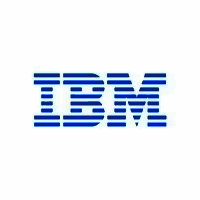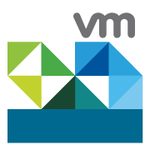Description

Awingu

IBM PowerVM
Comprehensive Overview: Awingu vs IBM PowerVM
Awingu and IBM PowerVM are both virtualization solutions but cater to different needs and markets within the broader IT landscape. Below is an overview of each, along with a comparison and analysis of their market positions and differentiating factors.
Awingu:
a) Primary Functions and Target Markets:
-
Primary Functions:
- Awingu is a unified workspace solution that allows users to access legacy and cloud applications, desktops, and files through a browser. It emphasizes ease of use, and secure access, without the need for a VPN.
- It provides a secure environment by using SSL/TLS encryption and multi-factor authentication, and it requires no installation on the client side.
-
Target Markets:
- Small to medium-sized businesses (SMBs) and enterprises seeking easy remote access to applications without overhauling their existing infrastructure.
- Businesses with a need for secure remote access for their employees, particularly those leveraging Bring Your Own Device (BYOD) policies.
b) Market Share and User Base:
- Awingu has carved out a niche within organizations looking for hassle-free and secure remote access solutions. While it does not compete on the massive scale of some larger virtualization products, it is popular in regions and sectors where VPN usage may be cumbersome or undesirable.
- Its user base is growing among businesses that prioritize ease of deployment and minimal IT overhead.
c) Key Differentiating Factors:
- Browser-based access with no client-side software requirements, which minimizes IT management overhead.
- Focused on security with encryption standards and easy integration of multi-factor authentication.
- Relatively easy to set up compared to more complex VDI solutions.
IBM PowerVM:
a) Primary Functions and Target Markets:
-
Primary Functions:
- IBM PowerVM is a virtualization platform specifically designed for IBM Power Systems servers. It allows multiple operating systems to run on a single physical Power Systems server, streamlining resource management and improving utilization.
- It supports various virtualization tasks, including partitioning capabilities, workload management, and dynamic resource allocation.
-
Target Markets:
- Large enterprises requiring robust and scalable server virtualization solutions.
- Industries where IBM Power Systems are prevalent, such as finance, healthcare, and large-scale data management environments.
b) Market Share and User Base:
- IBM PowerVM holds a significant share of virtualization solutions specifically tied to IBM hardware. It is widely used by large enterprises running critical applications on IBM Power Systems.
- While it doesn't compete with general x86-based virtualization solutions in market size, it dominates within its niche, particularly where reliability and performance of IBM hardware are critical.
c) Key Differentiating Factors:
- Deep integration with IBM Power Systems, offering optimized performance for enterprise-level workloads.
- Advanced partitioning allowing precise resource allocation, essential for industries with heavy computational needs.
- High reliability and strong support for UNIX and Linux-based environments, crucial for organizations with mission-critical applications.
Comparison:
-
Overall Market Share and User Base:
- Awingu targets businesses looking for simplicity in secure remote access, while IBM PowerVM is tailored for enterprises in need of high-performance server virtualization.
- Although not directly competing against each other, IBM PowerVM is more established in its respective market due to its integration with the powerful IBM ecosystem.
-
Differentiation:
- Awingu is geared toward browser-based access without specialized hardware, making it attractive for diverse and agile environments.
- IBM PowerVM offers a performance-focused solution tightly integrated with IBM hardware, appealing to industries requiring robust, scale-out virtualization.
These products are fundamentally different in their design and application; one is a streamlined, software-based access solution, and the other a hardware-centric, performance-optimized virtualization platform. Their markets and user demographics are reflective of these core differences.
Contact Info

Year founded :
Not Available
Not Available
Not Available
Not Available
Not Available

Year founded :
Not Available
Not Available
Not Available
Not Available
Not Available
Feature Similarity Breakdown: Awingu, IBM PowerVM
Awingu and IBM PowerVM are quite different in their core functionalities and intended use cases, with Awingu being a unified workspace solution primarily for virtual desktops and applications, while IBM PowerVM is a virtualization platform designed for enterprise server environments. Despite their differences, there are some areas of overlap as well as unique features that set them apart.
a) Core Features in Common
-
Virtualization:
- Both platforms facilitate virtualization, although in different contexts. Awingu virtualizes desktop and application access, while PowerVM virtualizes physical server resources.
-
Security:
- Both solutions emphasize strong security measures, including secure access controls and data protection. They provide secure environments for user operations, though the specifics of these features may differ based on their use cases.
-
Scalability:
- Both Awingu and IBM PowerVM support scalability to accommodate growing numbers of users or workloads. Awingu scales with increased users accessing applications, whereas PowerVM scales by managing more virtualized server resources.
-
Access Management:
- Both platforms offer management functionalities that enable administrators to control access. Awingu does it through a user-friendly interface for workspace access, while PowerVM offers detailed control over virtual environments.
b) User Interface Comparison
-
Awingu:
- Awingu provides a web-based interface that delivers a unified workspace to end-users through their web browser. It's designed to be intuitive and user-friendly, allowing users to access applications, files, and desktops without client-side installations. The interface offers a seamless experience with drag-and-drop capabilities and integrates various applications in a single pane of glass.
-
IBM PowerVM:
- PowerVM interfaces are more technical and typically accessed via management tools like the Hardware Management Console (HMC) or PowerVC for OpenStack management. These interfaces are designed for system administrators and offer detailed control over virtualization tasks. They are powerful but not designed with the same end-user focus as Awingu.
c) Unique Features
-
Awingu:
- Web-Based Access: Awingu's unique selling point is its ability to offer a workspace entirely through a web browser without the need for client-side installations or plugins.
- Unified Workspace: Offers integration with multiple applications, cloud services, and local resources in a single interface.
- Device Agnostic: Users can access their workspace from any device with a browser, contributing to flexibility and mobility.
-
IBM PowerVM:
- Advanced Virtualization Features: Offers enterprise-grade virtualization features like Live Partition Mobility, which allows for moving workloads without downtime, and Micro-Partitioning, which provides fine-grained resource allocation.
- Integration with IBM Systems: Deep integration with IBM’s Power Systems hardware, offering high performance and reliability for enterprise applications.
- Enhanced Resource Management: Provides detailed performance monitoring and efficient resource utilization for optimizing virtual environments.
In summary, while both Awingu and IBM PowerVM offer virtualization and secure, scalable environments, they are tailored to different user bases and operational requirements. Awingu focuses on delivering virtual workspaces in a user-friendly manner, while IBM PowerVM provides powerful and detailed virtualization for enterprise infrastructure needs.
Features

User Access and Security
Remote Desktop and Application Access
Admin and Management Features
Collaboration and File Sharing

Virtualization and Partitioning
Security and Compliance
High Availability and Redundancy
Best Fit Use Cases: Awingu, IBM PowerVM
Awingu and IBM PowerVM are both virtualization technologies, but they cater to different types of businesses and scenarios based on their functionalities and core strengths. Here's a description of their best fit use cases:
Awingu
a) For what types of businesses or projects is Awingu the best choice?
-
Small to Medium Enterprises (SMEs): Awingu is particularly suited for SMEs that need a cost-effective, easy-to-manage solution for providing secure remote access to their staff. It eliminates the need for complex VPNs and can be quickly deployed.
-
Remote Workforce Enablement: Businesses looking to empower a remote or hybrid workforce can benefit from Awingu’s secure access to applications, desktops, and files from any device through a browser.
-
Educational Institutions: Schools and universities can use Awingu to provide students and faculty with secure, flexible access to educational resources and virtual classrooms.
-
Healthcare Sector: Healthcare providers can leverage Awingu to provide doctors and staff with secure access to medical applications and patient data without compromising security, adhering to strict compliance requirements.
-
Companies with Legacy Applications: Awingu can be a great bridge for businesses that still rely on legacy Windows applications, providing a modern access layer without the need for extensive redevelopment.
-
Organizations with Limited IT Resources: Awingu’s simple setup and cloud-friendly approach make it ideal for organizations with limited IT staff or infrastructure.
IBM PowerVM
b) In what scenarios would IBM PowerVM be the preferred option?
-
Large Enterprises: IBM PowerVM is ideal for large enterprises that require robust virtualization solutions with high reliability, scalability, and performance, particularly those already using IBM Power Systems.
-
Mission-Critical Workloads: Industries with mission-critical applications, such as finance and telecommunications, benefit from PowerVM’s capacity to handle intensive computational tasks with high availability.
-
Cloud Integration: Businesses looking to build a private cloud infrastructure on IBM hardware will find PowerVM’s integration capabilities with hybrid environments beneficial.
-
Data-Intensive Applications: Enterprises running data-intensive applications like databases (DB2, Oracle) can leverage PowerVM for optimized performance.
-
Virtualization of Heterogeneous Environments: Organizations needing to virtualize a mixed environment with both Linux and AIX/IBM i workloads on the same hardware would find PowerVM advantageous.
-
High Security and Compliance Requirements: Financial institutions and healthcare providers, among others, that need to maintain stringent security and compliance standards for their IT infrastructure.
d) How do these products cater to different industry verticals or company sizes?
-
Awingu is typically more appealing to smaller businesses and industries that need quick, flexible remote access without intensive IT infrastructure or maintenance needs. Its cross-industry applicability and ease of use make it a versatile choice for non-IT heavy sectors like education, healthcare, and small professional services firms.
-
IBM PowerVM is usually aligned with larger, enterprise-level organizations that have more complex IT demands. It caters well to sectors like finance, telecommunications, and manufacturing, where performance, scalability, and reliability are critical. It is often used by companies with established IT departments capable of managing sophisticated virtual environments.
In summary, Awingu offers an agile and accessible remote access solution for smaller businesses and varied industries, while IBM PowerVM is tailored towards robust and scalable virtualization needs of larger enterprises, particularly those with mission-critical workloads.
Pricing

Pricing Not Available

Pricing Not Available
Metrics History
Metrics History
Comparing undefined across companies
Conclusion & Final Verdict: Awingu vs IBM PowerVM
When comparing Awingu and IBM PowerVM, it's essential to understand that these are two distinct types of solutions catering to different needs. Awingu is a unified workspace solution focused on delivering cloud-based or on-premises applications and desktops to users in a secure, browser-based environment. In contrast, IBM PowerVM is a virtualization platform designed to optimize and manage workloads in a data center environment, specifically for IBM Power Systems.
a) Best Overall Value:
Determining the best overall value between Awingu and IBM PowerVM largely depends on the specific needs and context of the user or organization:
-
Awingu offers excellent value for organizations seeking to provide remote access and improve mobility for their workforce. Its ability to aggregate multiple applications and data sources into a single, secure workspace makes it ideal for businesses prioritizing ease of access and security without substantial infrastructure changes.
-
IBM PowerVM provides significant value for enterprises that require robust virtualization capabilities in managing complex and high-demand workloads. It's particularly suited for organizations with existing IBM Power Systems, where the scalability, reliability, and performance optimization offered by PowerVM are critical.
b) Pros and Cons:
Awingu:
Pros:
- Ease of deployment and management, as it operates through a web browser without requiring client installation.
- Strong security features including multi-factor authentication and SSL encryption.
- Cost-effective for organizations seeking remote access solutions without heavy infrastructure investment.
Cons:
- May not be as suitable for environments requiring high-performance computing or needing deep integration with hardware resources.
- Dependent on internet connectivity and browser compatibility for optimal performance.
IBM PowerVM:
Pros:
- High performance and scalability with robust support for IBM Power Systems.
- Advanced virtualization capabilities, allowing for efficient resource use and managing high-demand workloads.
- Enhanced system reliability and uptime, which is crucial for mission-critical applications.
Cons:
- Can be more costly due to its focus on enterprise-level virtualization solutions, especially for smaller organizations.
- Requires a certain level of expertise to manage and maintain effectively.
c) Specific Recommendations for Users:
-
For Organizations Focused on Mobility and Remote Access: Awingu is more suitable if the primary goal is to enhance user access to applications and data while maintaining security without extensive infrastructure overhaul. It is particularly beneficial for businesses with a distributed workforce or needing to implement hybrid work environments quickly.
-
For Organizations with High-Performance Computing Needs: IBM PowerVM should be the choice for enterprises that already utilize IBM Power Systems and need a reliable virtualization solution to manage complex workloads. It is a stronger fit for data centers requiring efficient resource allocation and high availability.
Ultimately, the decision between Awingu and IBM PowerVM should be guided by specific organizational needs, existing infrastructure, and future growth plans. Careful consideration of the above pros and cons and consultation with IT advisors can further assist in making a well-informed choice.
Add to compare
Add similar companies



